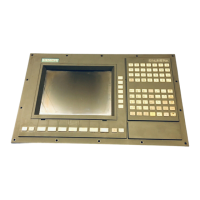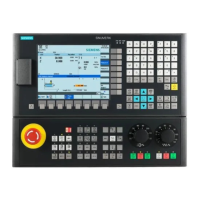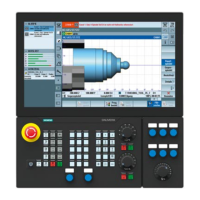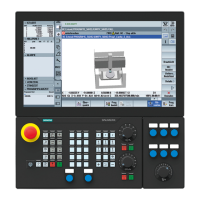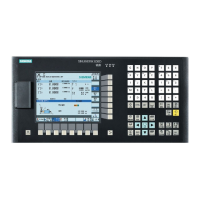11
08.97 Oscillation
11.1 As
nchronous oscillation
11
840D
NCU 571
840D
NCU 572
NCU 573
FM-NC 810D 840Di
Siemens AG 2000. All rights reserved
SINUMERIK 840D/840Di/810D/FM-NC Programming Guide Advanced (PGA) – 04.00 Edition
11-397
The oscillating axis
For the oscillating axis the following applies:
•
Any axis can be used as an oscillating axis.
•
Several oscillating axes can be active
simultaneously (maximum: number of positioning
axes).
•
Linear interpolation G1is always active for the
oscillating axis – irrespective of the G command
currently valid in the program.
The oscillating axis can
•
act as an input axis for a dynamic transformation
•
act as a guide axis for gantry and combined-
motion axes
•
be traversed
– without jerk limitation (BRISK) or
– with jerk limitation (SOFT) or
– with acceleration curve with a knee
(as for positioning axes).
Oscillation reversal points
The current offsets must be taken into account when
oscillation positions are defined:
•
Absolute specification
OSP1[Z]=value
Position of reversal point = sum of offsets +
programmed value
•
Relative specification
OSP1[Z]=IC(value)
Position of reversal point = reversal point 1 +
programmed value
Example:
N10 OSP1[Z]=100 OSP2[Z]=110
.
.
N40 OSP1[Z]=IC(3)

